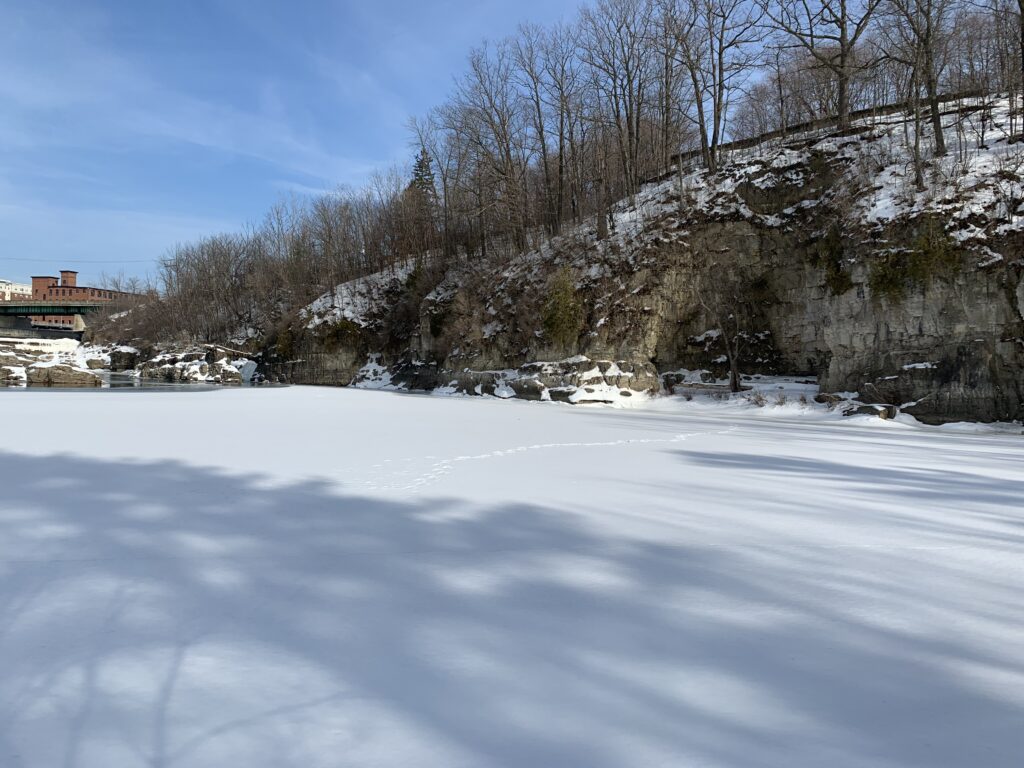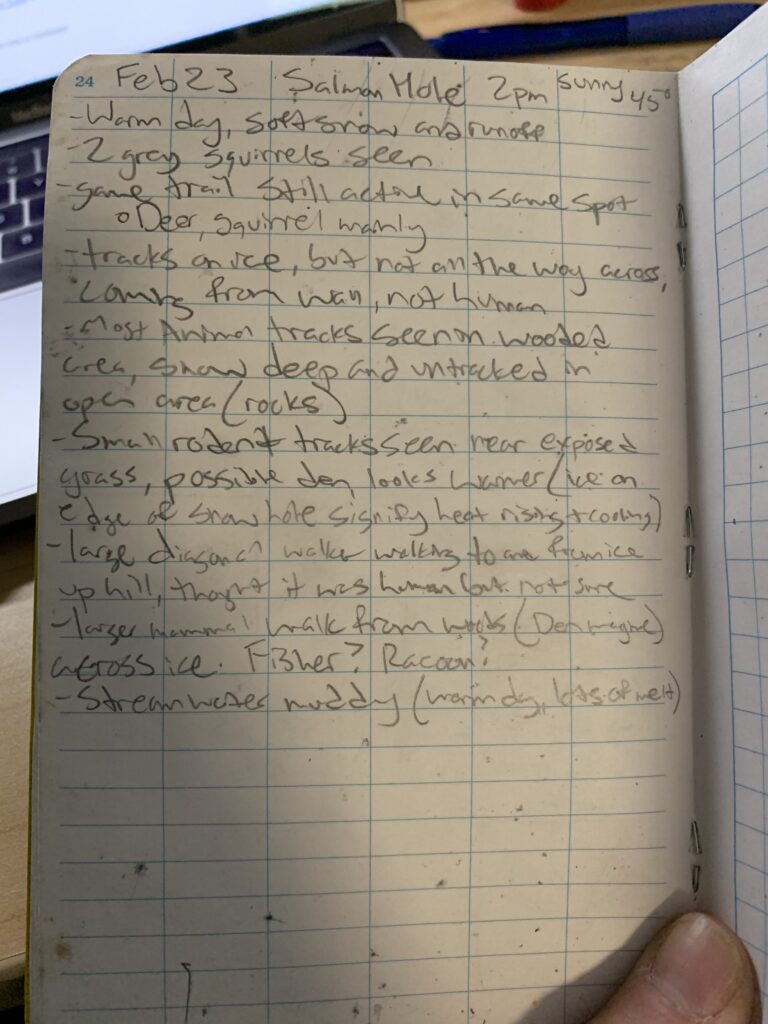February 23rd, 2020
Today the Salmon Hole was melting. Temperatures rising into the mid to upper 40’s and a bluebird sky quickly softened the snow pack and produced a lot of surface runoff running down the hill from Rt. 7. The runoff stream coming from a storm drain on Rt. 7 sent a muddy stream of water into the salmon hole, only visible at the inlet of that stream where it meets the deeper water of the salmon hole. As soon as I started walking down the path I noticed two grey squirrels chasing each other across the ground before quickly ascending an old mature oak once they acknowledged my presence.
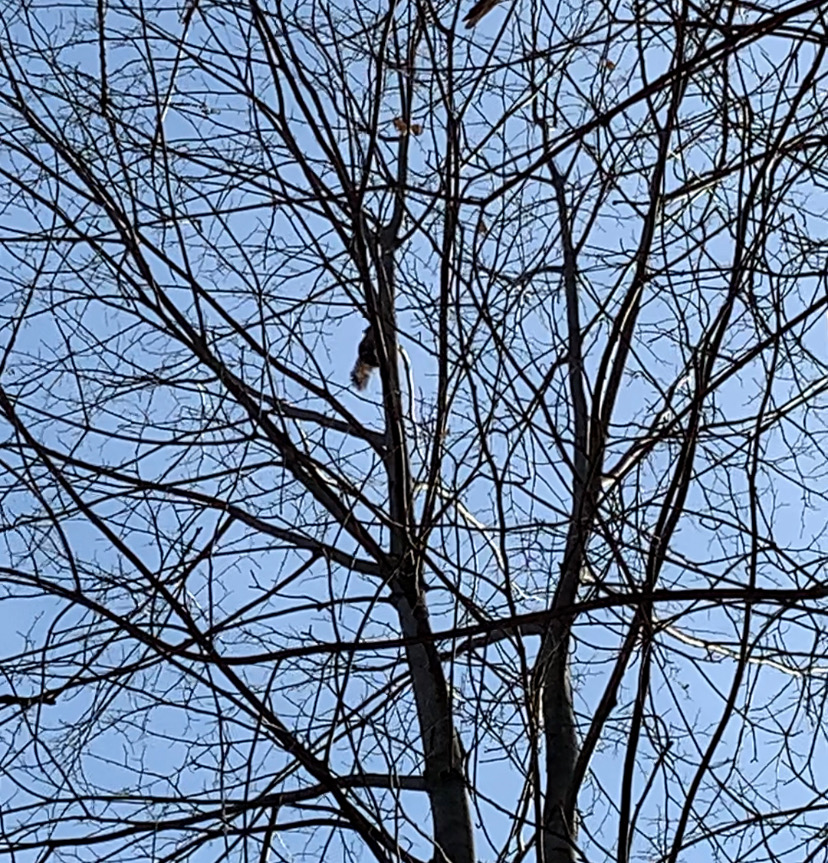
The snow was deeper than it was during my last visit to the site, but had settled over the past two weeks as temperatures continued to fluctuate and a melting-freezing pattern caused the nearly 2 foot drifts of powder to be reduced to a consistent 6-8″ deep snow pack. This deeper snow notably reduced the terrestrial activity at the salmon hole, as the animal tracks were much less busy and scattered across the forest floor. It was evident that the animals at the salmon hole wanted to take as direct of a path as possible through the deeper snow, and chose to follow the same game trail as seen during the January visit.
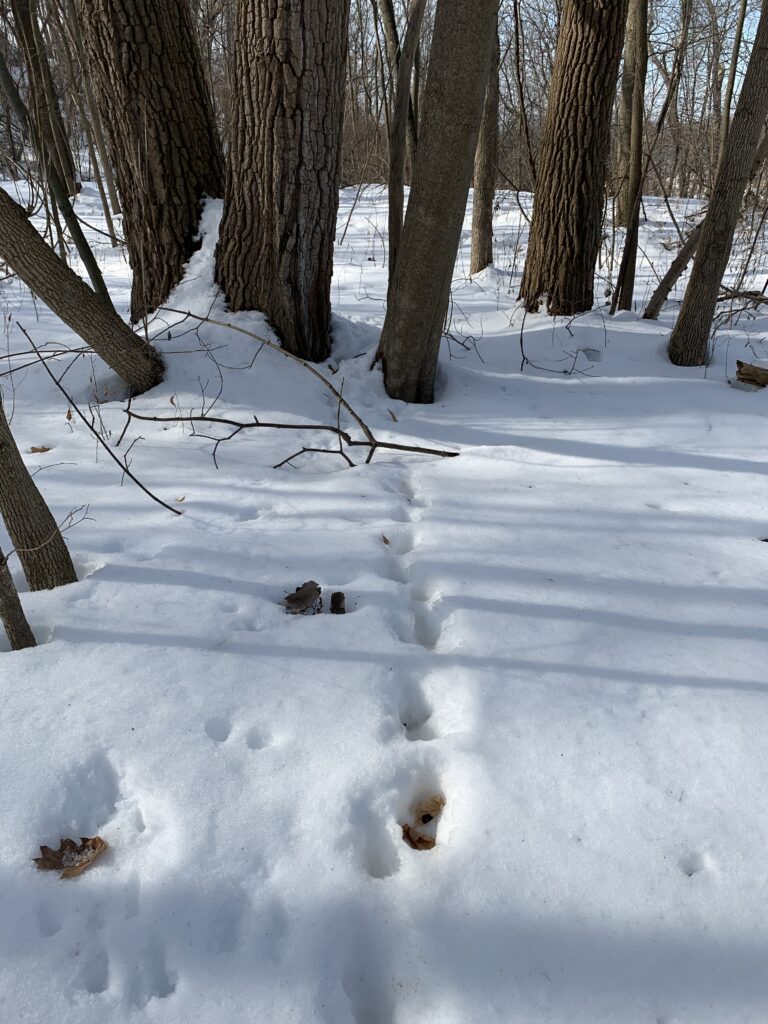
The majority of the tracks seen in the wooded area of the salmon hole were of whitetail deer and grey squirrel, but as soon as I reached the open-coverage rock ledges near the ice, the animal tracks became much less frequent. Near the shore, there was tracks from a small rodent, possibly a field mouse or shrew, leading to a hole in the snow that appeared to be a den. I could tell it was a den because around the edge of the hole there was a layer of clear ice frozen to the snow, which is a result from the heat of the rodent rising up and out of the subnivean zone, causing a quick melting and refreezing process where the hole is exposed to the elements.
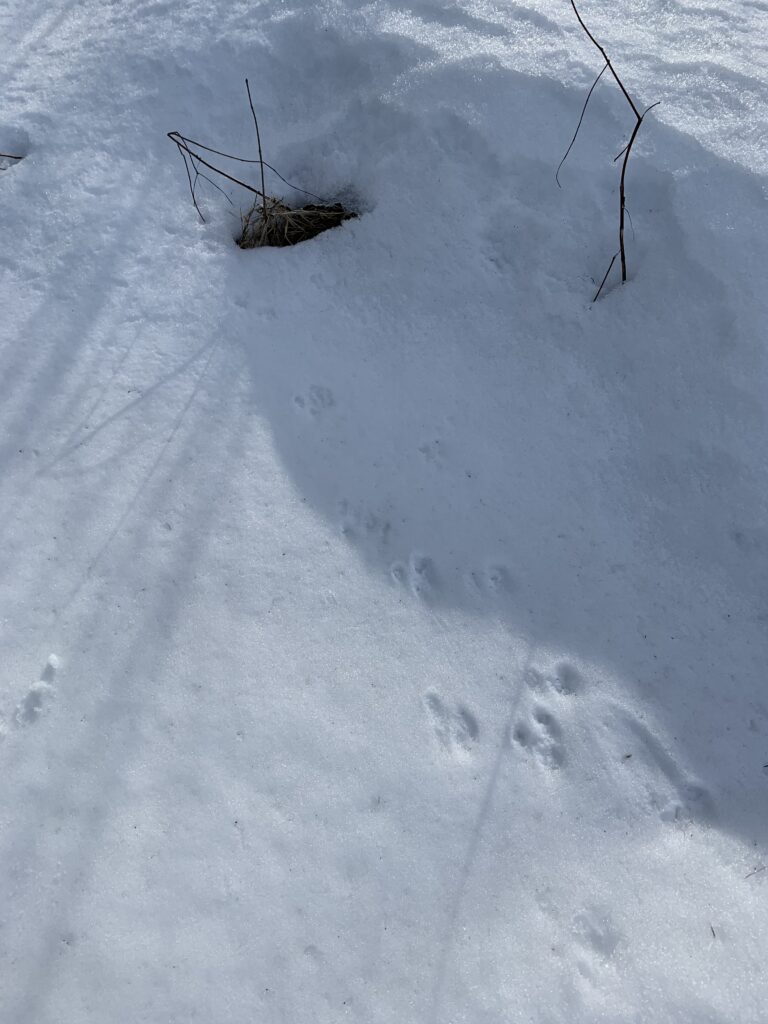
Both the field mouse and the grey squirrel at this point in the season are searching the area for any food source they can find, and with the deep snow, the mouse living in the subnivean zone has an advantage both in protection from predators and being closer to food stash deposits on the soil beneath the snow. In terms of predators, a bounding track pattern heading from the wooded area and on the the ice resembled that of a fisher cat.
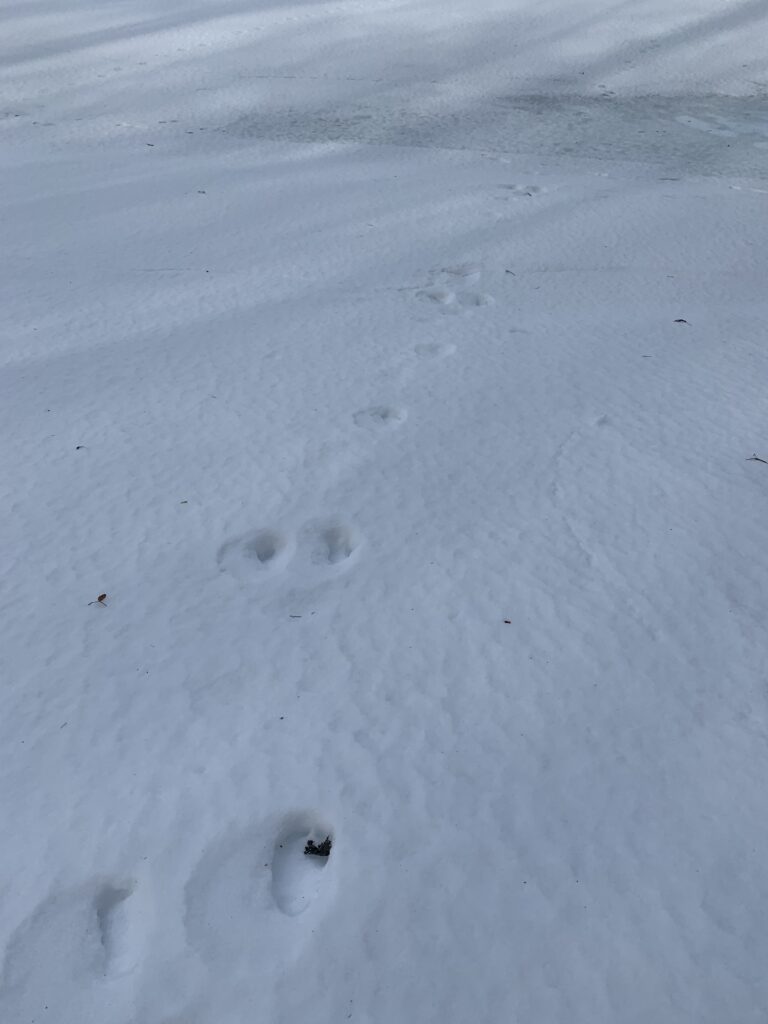
The fisher left a faint track on the ice but I could make out a path on the ice that matched with the tracks seen in the snow. The fisher spent some time on the ice, leaving many tracks in the center of the hole, but then traveled towards the cliff. There were tracks on the ice leading towards the west side of the salmon hole, but stopped and quickly turned around heading back towards the cliff, possibly recognizing a thin spot in the ice. I noticed this as I was walking around the edge of the ice, and decided that I should yield to the warning of the fisher cat and not travel on that part of the ice.
